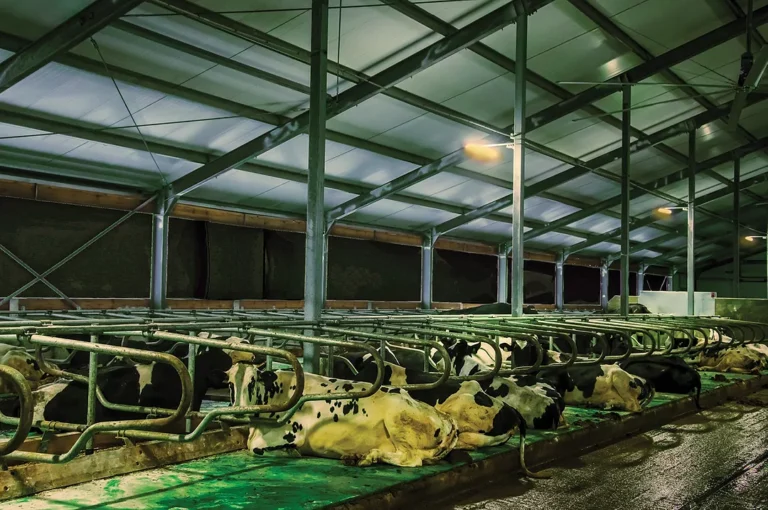Stocking density is the number of turkeys housed per unit of space. It is one of the most influential factors in flock health, growth performance, and farm profitability. Managing it correctly means striking a balance between maximizing production and ensuring animal welfare.
Too many birds in a confined area can lead to stress, aggressive pecking, poor air quality, and rapid disease spread. On the other hand, keeping too few birds can increase production costs per unit without significantly improving outcomes.
The ideal stocking density depends on the birds’ age, breed, and production system. For example, commercial meat breeds like the Broad Breasted White require more space as they approach market weight because of their large size and reduced mobility.
Young poults can be kept closer together during the first weeks, but as they grow, the space allocation must increase steadily to allow free movement and prevent overcrowding.
In deep litter housing, a general recommendation is to provide at least 2.5 to 3 square feet per bird for younger turkeys, increasing to 6 to 8 square feet for fully grown adults.
In free-range systems, indoor space can be smaller if sufficient outdoor access is provided, but the pasture area should be generous enough to prevent overgrazing and maintain forage quality.
Environmental management plays a key role in stocking density decisions. High-density flocks require stronger ventilation systems to maintain good air quality, particularly to control ammonia levels that can damage respiratory health.
Litter management is equally important, as higher bird numbers generate more waste that must be absorbed and regularly turned to prevent dampness.
Even lighting distribution ensures all birds have equal access to feeders and drinkers, which should be positioned to avoid crowding and dominance behavior.
Observing bird behavior is often the most reliable indicator of whether the stocking density is appropriate. If turkeys are constantly jostling for space, avoiding certain areas, or showing signs of feather pecking and stress, the housing may be too crowded.
Conversely, evenly distributed, active, and calm birds suggest a comfortable environment.
If these cues and adjusting space allocation are monitored as the flock grows, farmers can maintain optimal stocking density, improving both productivity and animal welfare.

